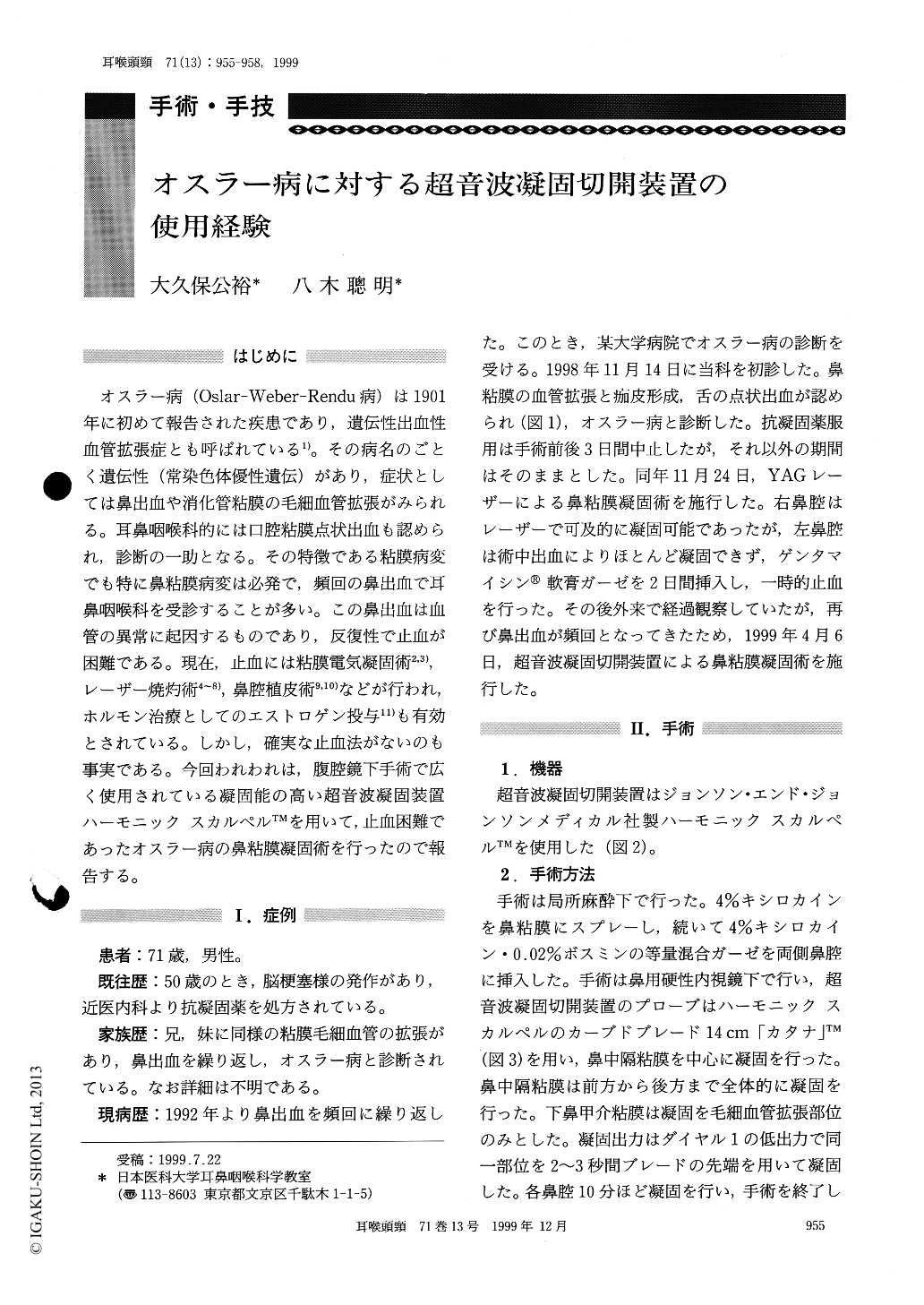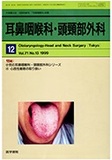Japanese
English
- 有料閲覧
- Abstract 文献概要
- 1ページ目 Look Inside
はじめに
オスラー病(Oslar-Weber-Rendu病)は1901年に初めて報告された疾患であり,遺伝性出血性血管拡張症とも呼ばれている1)。その病名のごとく遺伝性(常染色体優性遺伝)があり,症状としては鼻出血や消化管粘膜の毛細血管拡張がみられる。耳鼻咽喉科的には口腔粘膜点状出血も認められ,診断の一助となる。その特徴である粘膜病変でも特に鼻粘膜病変は必発で,頻回の鼻出血で耳鼻咽喉科を受診することが多い。この鼻出血は血管の異常に起因するものであり,反復性で止血が困難である。現在,止血には粘膜電気凝固術2,3),レーザー焼灼術4〜8),鼻腔植皮術9,10)などが行われ,ホルモン治療としてのエストロゲン投与11)も有効とされている。しかし,確実な止血法がないのも事実である。今回われわれは,腹腔鏡下手術で広く使用されている凝固能の高い超音波凝固装置ハーモニックス カルペルTMを用いて,止血困難であったオスラー病の鼻粘膜凝固術を行ったので報告する。
Severe nose bleeding in patients with Oslar dis-ease is difficult to control. Surgical treatment is usually made by laser photocoagulation or septal dermoplasty. We used ultrasonic coagulation appa-ratus, Harmonic ScalpeTM for control of nose bleed-ing in a patient with Oslar disease. Ultrasonic coagulation in low amplitude was performed under nasal endoscopy. The coagulation time was about 20 min with local anesthesia. The frequency of nose bleeding were decreased after surgery to average 0.7 times per day compared before surgery, 3.3 times per day. Ultrasonic coagulation might be a better technique compared to other surgeries for the patients with Oslar disease.

Copyright © 1999, Igaku-Shoin Ltd. All rights reserved.


